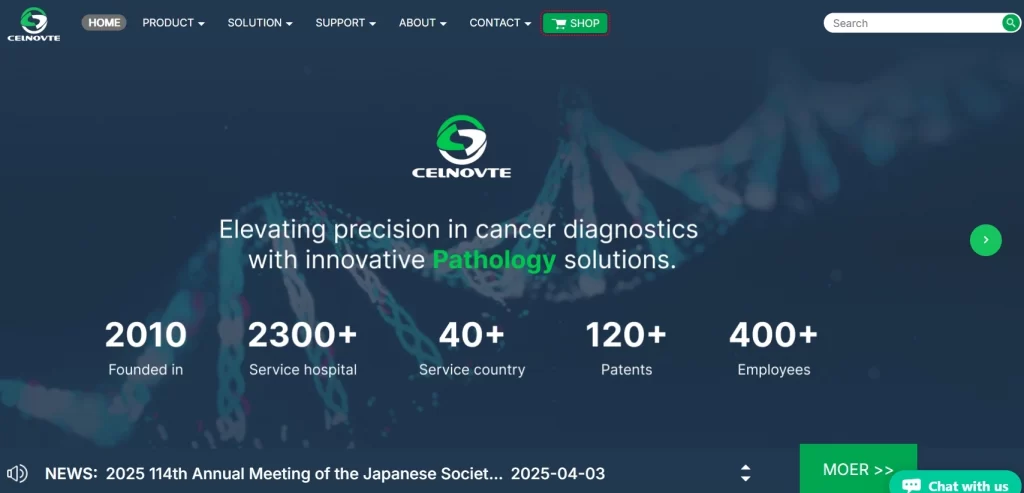Unlocking Tumor Microenvironment Insights with mIHC for Cancer Immunotherapy

By admin
Cancer research is changing fast. Scientists now focus on the tumor microenvironment (TME) to find better treatments. The Multiplex Immunohistochemical (mIHC) Kit is a key tool in this work. It lets researchers spot many immune cell markers in one tumor sample. This helps them see how immune cells spread out and work together. It also supports studies on cancer immunotherapy, like predicting how well immune checkpoint inhibitors work.
In this blog, we dive into how mIHC boosts TME analysis, its uses in cancer studies, and how it solves big problems in immunotherapy research.
Why the Tumor Microenvironment Is Important
The TME is a busy mix of cancer cells, immune cells, support cells, and signals. This mix affects how tumors grow, spread, and respond to treatments. Old-school single-marker immunohistochemistry (IHC) struggles to show this complexity. It only checks one marker at a time, using up many tissue slices and risking sample loss. But mIHC is different. It shows multiple markers on one slice, giving a full picture of the TME.
Problems in Studying the TME
Studying the TME isn’t easy. Here are some issues:
- Variety: Tumors differ a lot between people and even within one tumor. This makes findings hard to apply broadly.
- Few Samples: Biopsies are often tiny. This limits how many tests can be done.
- Tricky Immune Links: Figuring out how immune cells like T cells or macrophages act in the TME needs advanced tools.
- Guessing Therapy Results: Finding markers that show if immunotherapies, like PD-1/PD-L1 blockers, will work is tough.
mIHC tackles these problems. It offers clear, multi-marker views, saves samples, and gives deep insights into immune cell actions.
How mIHC Improves Tumor Microenvironment Analysis
Multiplex Immunohistochemical (mIHC) Kits let scientists detect 6-8 markers on one tissue slice. They use smart staining and imaging tools. This is great for TME analysis. It shows where immune cells, like CD3+ T cells, CD8+ killer T cells, CD20+ B cells, and PD-L1 on tumor cells, are located and how they act. With automated staining and image tools, mIHC gives reliable, clear data. This helps push precision cancer research forward.
Main Uses of mIHC in Cancer Studies
mIHC is changing cancer research in these ways:
- Tracking Immune Cells: mIHC clearly shows where immune cells, like tumor-infiltrating lymphocytes (TILs), are in the TME. For instance, it can spot how many FOXP3+ regulatory T cells or CD163+ macrophages are present and where they sit. This helps understand immune suppression.
- Checking Immunotherapy Success: By spotting markers like PD-L1, CTLA-4, or LAG-3, mIHC predicts who will benefit from immune checkpoint inhibitors. This guides custom treatment plans.
- Finding New Treatment Targets: mIHC reveals new links between immune and tumor cells. This points to fresh targets for drugs.
- Helping Clinical Trials: mIHC sorts patients by marker profiles that match treatment results. This improves trial design and drug creation.
Why mIHC Beats Traditional IHC
|
Feature |
Traditional IHC |
mIHC |
|
Markers Detected |
1 per slide |
6-8 per slide |
|
Sample Usage |
High |
Low (single slide) |
|
Spatial Analysis |
Basic |
Clear, detailed mapping |
|
Data Quality |
Simple |
Strong, automated results |
|
Consistency |
Varies |
Steady, with standard kits |
mIHC overcomes old IHC limits. It helps researchers dig deeper into the TME and speeds up better cancer treatments.
mIHC at Work: Real Examples in Immunotherapy Research
Example 1: Breast Cancer Studies
In breast cancer, mIHC helped study triple-negative breast cancer (TNBC). Researchers used it to check CD8, CD4, FOXP3, and PD-L1 at once. They found patients with lots of CD8+ T cells and PD-L1 were more likely to respond to anti-PD-1 drugs. This sorting made clinical trials better and showed mIHC’s power in tailored medicine.
Example 2: Pancreatic Cancer Insights
Pancreatic ductal adenocarcinoma (PDAC) resists immunotherapy. mIHC mapped the TME, showing a thick stromal wall and few CD8+ T cells. By targeting stromal parts found with mIHC, new combo therapies were tested. These showed promise in early studies.
Example 3: Melanoma Marker Findings
In melanoma, mIHC studied where CD20+ B cells were and how they worked with T cells. The data showed B cell-rich areas linked to better immunotherapy results. This found a new role for B cells in the TME and shaped future treatment ideas.
These cases show how mIHC delivers useful insights. It helps researchers solve tough problems in cancer immunotherapy.
Celnovte Biotech: A Top mIHC Kit Maker
Celnovte Biotech is a leading name in medical devices. They focus on immunohistochemistry tools, like Multiplex Immunohistochemical (mIHC) Kits, tissue processors, and staining systems. Celnovte is dedicated to advancing cancer research. Their mIHC Kits give accurate, steady results for TME analysis. Their automated systems make work easier, letting researchers study many markers while keeping samples safe.
With smart technology and easy-to-use designs, Celnovte helps scientists explore new paths in cancer research and immunotherapy.
Frequently Asked Questions (FAQs)
Q1: What is mIHC, and how is it different from regular IHC?
A: Multiplex Immunohistochemical (mIHC) is a high-tech method. It detects 6-8 markers on one tissue slice. Regular IHC only checks one marker per slice. mIHC gives clear, detailed data. It’s perfect for complex studies like tumor microenvironment analysis.
Q2: How does mIHC help cancer immunotherapy research?
A: mIHC maps immune cells in the tumor microenvironment. It shows their spread and interactions. It spots markers like PD-L1 or CD8 that predict how well therapies, like immune checkpoint inhibitors, work. This helps pick the right patients and improve treatments.
Q3: Can mIHC work with small biopsy samples?
A: Yes, mIHC saves samples. It checks multiple markers on one slice. This is great for small biopsies, where keeping tissue is key for full analysis.
Q4: What markers can mIHC detect?
A: mIHC can spot many markers, like immune cell ones (CD3, CD8, FOXP3), tumor markers (Cytokeratin), and immunotherapy markers (PD-L1, CTLA-4). The markers depend on the study’s goals.
Q5: Does mIHC work with automated imaging tools?
A: Yes, mIHC pairs well with automated staining and imaging systems. It allows fast, reliable analysis of tumor microenvironment data with little manual work.
Boost Your Research Today
The tumor microenvironment is key to improving cancer immunotherapies. With Multiplex Immunohistochemical (mIHC) Kits, researchers can move past old limits. They gain clear insights into immune cell actions and marker profiles. Whether you’re studying immunotherapy success, finding new targets, or improving trials, mIHC is a must-have tool. It drives precision cancer research forward. Discover how advanced mIHC solutions can lift your work and help make life-changing cancer treatment breakthroughs.
RELATED PRODUCTS









